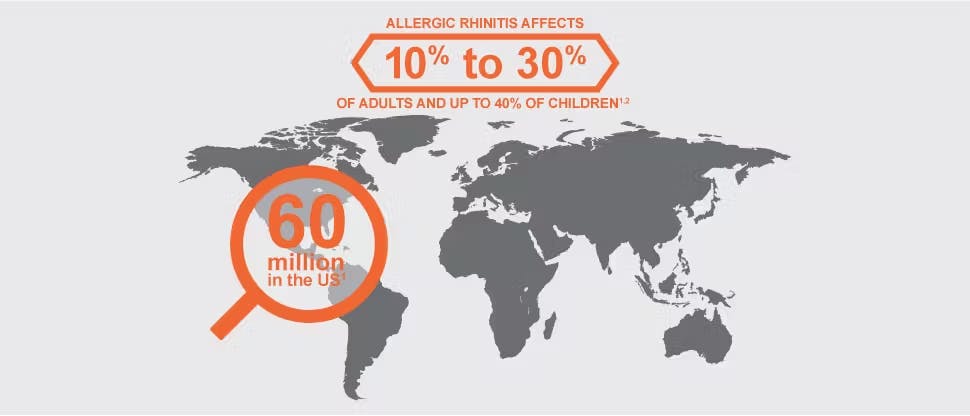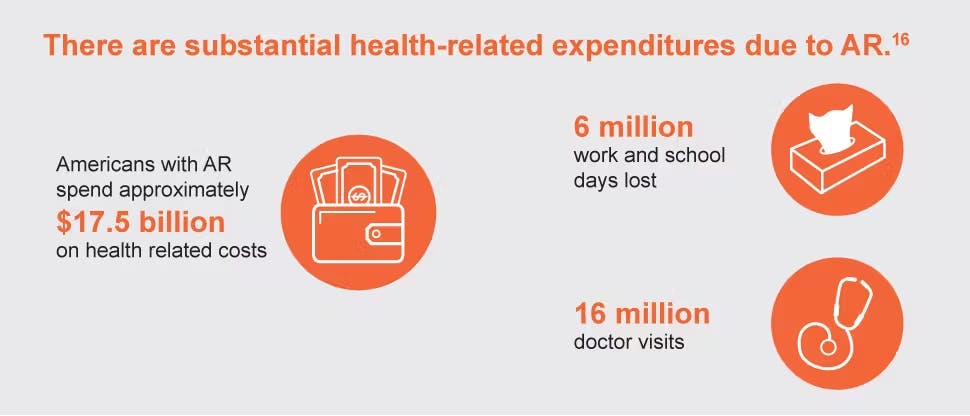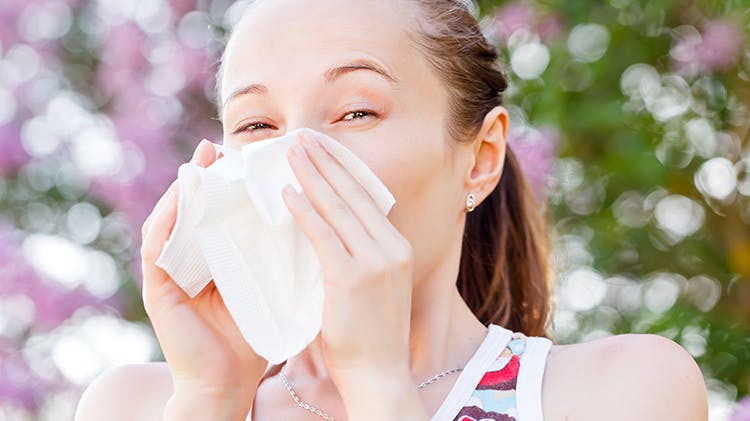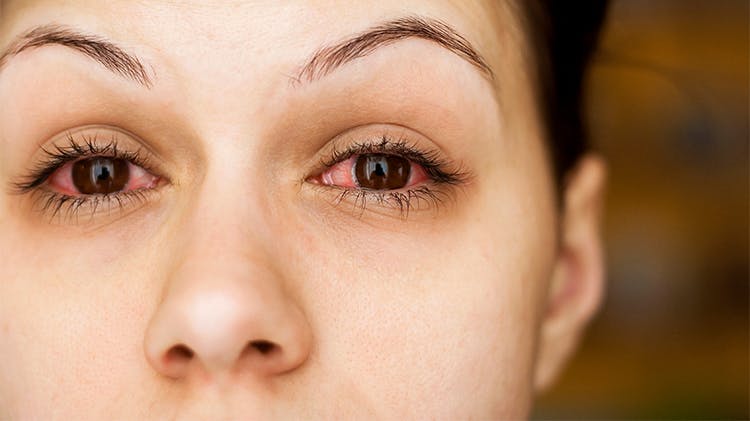Impact on Patient Quality of Life

Impact on Patient Quality of Life

Prevalence of allergic rhinitis (AR)
AR is a global health problem, affecting up to 60 million people in the United States (US) annually, where it is the 6th most prevalent chronic condition.1,2
Prevalence estimates range from 10% to 30% in adults, and up to 40% in children.1,2 AR is the most common chronic condition in children.2 In developed countries, there has been a substantial increase in the prevalence of AR.2-5
All of this can have a deep impact on the emotional and psychological well-being of your patients, who may be looking for a solution that restores their ability to live their lives uninterrupted by AR symptoms. AR may limit the ability of your patients to participate in social and outdoor activities, work productivity, and sleep.6
AR prevalence
Recent studies demonstrate that the prevalence of AR is actually increasing.7 Across the United States and Europe, in many populations, the frequency of sensitization to inhalant allergens is increasing and is now more than 40%.8
Regional variability with allergies
Because environmental allergens like pollen and grass are so common, there is no region that is notably better than another.9
Unfortunately, the end of spring doesn’t bring the end of allergies:10
- Patients can feel the impact of allergies throughout fall. Mold and ragweed pollen can make symptoms worse in the fall and pollen can remain in the air until winter has fully settled in.
- Lingering warm weather can create humidity, which in turn increases mold spores.
- When patients begin taking care of that pile of leaves in their yard, it can agitate and stir up all of these allergens once again.
One of the biggest contributors to fall allergies is ragweed pollen. Ragweed pollen can travel up to 400 miles in the wind, and East of the Rocky Mountains ragweed is the predominant cause of outdoor fall allergy symptoms. In addition to ragweed, a number of other weeds can contribute to pollen numbers in the fall.11
Quality of life impact
Many patients will “suffer in silence” without talking about their symptoms. They may be purposefully diminishing their allergy symptoms and the impact they have on their quality of life for a variety of reasons12:
- They believe allergies aren’t that serious or are not a “real disease,” but more of a nuisance13
- They may not know that while allergies may seem benign, they can still significantly impact their quality of life12
- They may be unaware that untreated allergies can increase the risk for more serious diseases, such as anaphylaxis, asthma, sinusitis, altered mood, and cognitive impairment12,14
Patients may not recognize some symptoms as being related to allergies. In addition to the more obvious symptoms, these surprising symptoms may be due to allergies12,14,15:
- Chronic fatigue
- Asthma
- Upper respiratory infection
- Bronchitis
- Sinus infection
- Depression
- Sleeping problems
- Difficulty concentrating
- Lack of exercise endurance
Allergies and loss of productivity

The increased prevalence of AR has led to an increase of direct and indirect health-related costs16
Read more about allergic rhinitis






Otri Allergy products
Find out how our products can help your patients suffering from allergic rhinitis